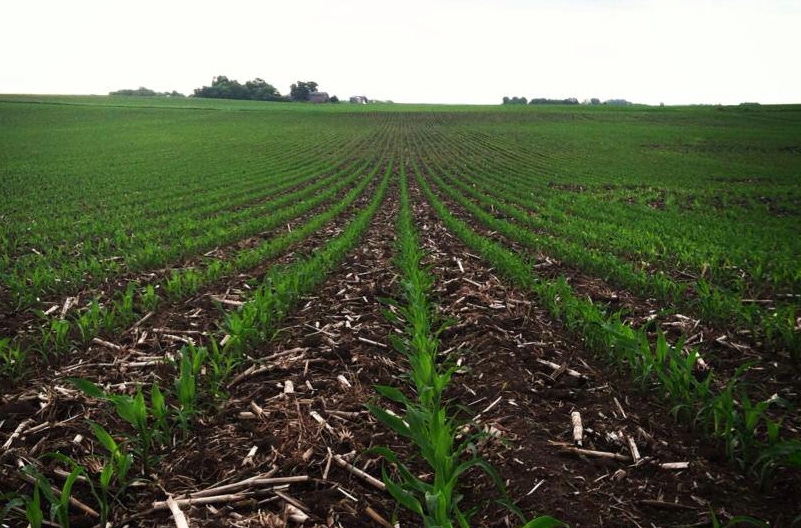May 31, 2016

With the start of the critical three-month growing season, the potential size of the 2016 U.S. corn crop becomes the focus of attention. The market will follow weather conditions, crop ratings, and weather forecasts in order to form yield expectations.
The starting point for forming yield expectations is typically the calculation of a trend yield based on the level of historical yields. That calculation can vary depending on the time period used in making the calculation and the assumed form of the trend -- linear or non-linear. We have argued that a linear trend of actual yields from 1960 forward provides the most reliable unconditional trend calculation for the current year. For 2016, that calculation is 164.4 bushels per acre. We have also argued that the unconditional trend yield should be adjusted upward due to the asymmetric effect of weather on actual yields. That is, poor weather tends to reduce yields more than good weather increases yields. As a result, a trend yield calculation that assumes average summer weather conditions is likely biased downward. Our previous research indicates the downward bias is about two bushels per acre (Irwin, Good, and Tannura, 2009). The adjustment results in a corn trend yield projection of 166.4 bushels for 2016.
While the actual U.S. average yield since 1960 was near trend value in some years, yields always deviated from the trend and sometimes by a large margin. Over the 56-year period from 1960 through 2015 the actual U.S. average yield exceeded the unconditional trend 61 percent of the time and was below trend 39 percent of the time. Market participants adjust yield expectations throughout the planting and growing season.
One of the factors that influences the direction and magnitude of early yield adjustments is the timeliness of planting, recognizing that yield potential is reduced if planting is delayed beyond the "sweet spot" for obtaining maximum yields. The timing of that sweet spot varies by region, but we have used May 20 to delineate timely from late planting on a national basis since 1986. Yield expectations tend to be reduced if the percentage of the crop planted late is larger than average.
While corn yields are dominated by summer weather, late planting implies that yields could have exceeded actual levels if planting had been more timely. Based on the USDA's weekly Crop Progress report for the 18 major producing states, we calculate the percent of the crop planted after May 20 for the 30 years from 1986 through 2015 ranged from four (2012) to 47 (1995) percent and averaged 18 percent. While the percent of the crop planted late in some states (Indiana and Ohio) was well above average this year, the percent of the crop planted after May 20 in the 18 major producing states this year was calculated to be 17 percent. This is very close to the long-term average and suggests that the expectation of a U.S. average yield near trend value should not yet be altered.
A second factor that will be monitored in order to adjust yield expectations is the USDA's weekly crop condition ratings. Those ratings tend to be biased early in the season, with ratings tending to decline as the growing season progresses, and early ratings are not always a good forecast of final ratings. Still, the market is interested in the condition of the crop as it compares to ratings in earlier years. The USDA will release the first crop condition ratings for all 18 major producing states in today's Crop Progress report. Ratings will be as of the 21st week of the year. For the previous 30 years, condition ratings have been available for that week in 17 years. On average, 71 percent of the crop was rated in good or excellent condition for that week, in a range of 43 (2002) to 79 (1994) percent.
The size of the 2016 corn crop will also obviously depend on the magnitude of harvested acreage. There is some expectation that planted acreage will fall short of intentions reported in the USDA's March survey due to late planting in the eastern Corn Belt and the recent large increase in soybean prices relative to corn prices. Acreage uncertainty will abound, however, until the USDA releases the Acreage report on June 30. Part of the uncertainty about corn acreage stems from the uncertainty about the magnitude of total acreage of spring planted crops.
While the market will focus on crop size, it is important to ask how much the price of corn will actually be influenced by the size of the crop. Our recent modelling of the relationship between the marketing year average price of corn and the year-ending stocks to use ratio suggests prices tend to be relatively stable over a wide range of ending stocks-to use ratios. That is, for a given level of consumption, the size of the crop has a relatively small impact on the marketing year average price of corn unless the crop is small enough to reduce ending stocks to less than about 10 percent of use. Over a wide range of corn supply, the more important determinant of price is the strength of demand. In this case, demand does not refer just to the amount of corn consumed, but instead includes the price users are willing to pay. Strong demand reflects a willingness to pay a "high" price for a given level of consumption while weak demand reflects a willingness to pay a "low" price for that consumption.
Corn demand has been weak for the past two years. The weather-reduced Brazilian corn harvest has recently provided some demand strength for U.S. corn and a modest price rally. As indicated last week, summer weather could provide additional price strength, at least temporarily. Stronger demand, in the form of more robust economic growth and higher livestock prices, would provide for a more permanent price increase.
You May Also Like




